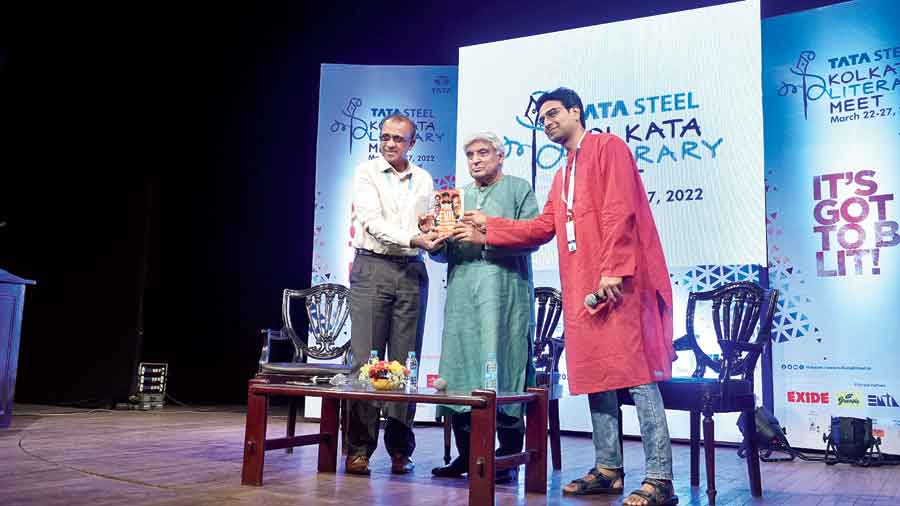The feudal lord of the 1930s to obsessed young lover of 90s, the evolution of Indian on-screen villains was dissected at a city auditorium on Wednesday.
GD Birla Sabhagar was the venue of Day Two of the Tata Steel Kolkata Literary Meet (Kalam), held in association with the Victoria Memorial Hall and The Telegraph.
Javed Akhtar, lyricist and screenwriter and Balaji Vittal, a second-generation Kolkatan and author of multiple books on cinema, discussed the bad men of Hindi cinema with Arvind, a popular radio jockey.
Vittal’s latest book, Pure Evil, is in the same vein.
Struggle at start
Vittal, a graduate in civil engineering from Jadavpur University in south Kolkata, said writing about villains was tricky.
“I struggled for two-three years for the story. What do you write about villains? Because they are the bad guys. How can you make them the centre of your story? I started researching by interviewing directors, actors and scriptwriters. But once I got the interview transcripts, that could not be a story in itself.
“Then, it took me some time to open that big black box of villainy, take out all the goodies and arrange them in decent folders with each folder standing for a genre of villainy. That took me quite a while,” he said.
Mirror
The changing face of film villains was a pointer to the changing fabric of the country, said Akhtar.
“Make a list of villains and you can write the socio-economic or socio-political history of the past 70-80 years,” he said.
“Coming out of feudal times, zamindars and thakurs were villains. As urbanisation started, the villain became the slumlord or the underworld boss. When we believed in a socialistic pattern of society, the villain was the rich man. Life was simple, poor people were good people and rich people were bad people — mill owners, boss of the company, money lenders were the bad people. Then, police and politicians were the villains,” Akhtar said.
“Because of problems with our neighbours, Pakistan, terrorists were villains. Now, we are devoid of villains. Because that rich man, that man from the underworld or whatever, they are our ideals now. We want to be mill owners, we want to own companies,” he said.
Perfect freedom
Indian audiences have always rejected lecherous villains, said Akhtar.
“You think of Amrish Puri as Mogambo, Amjad Khan as Gabbar and Ajit as Teja. They are memorable villains. They are evil people but have one common quality. They are not lecherous. No lecher can be a memorable villain. It is strange. Audience might watch them in the film but do not admire them. They admire villains who are asexual,” said Akhtar.
He went on to explain the reason people admired these villains.
“Why did children admire Gabbar, a perverse, ruthless, sadistic killer? All of us have a Gabbar, to some degree, inside us. That Gabbar is suppressed by morality, conscience, fear of law, pressure of peers.... We admire the freedom of these people. They are free of morality, conscience. This freedom is perfect and you respect that,” he said.
